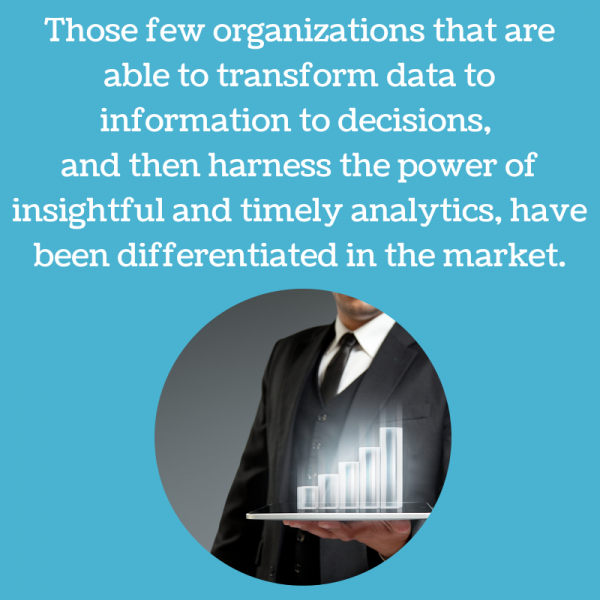Healthcare systems must be able to provide timely and accurate financial information for decision making and planning. Many hospitals and health systems are targeting hefty reductions in their operating budgets to maintain financially viable without interrupting investments in facility, information technology and other areas needed to remain competitive. This cost management culture requires organizations to fully understand and ensure transparency exists for key performance indicators that drive consumption and reflect service line profitability.
 Whether it is supplies, labor or productivity or clinical effectiveness, the quality/cost/value equation requires the organization to truly understand their data. This includes not only considering the right product at the right place, but also applying a broader perspective on clinical evidence for resources used and approaches employed.
Whether it is supplies, labor or productivity or clinical effectiveness, the quality/cost/value equation requires the organization to truly understand their data. This includes not only considering the right product at the right place, but also applying a broader perspective on clinical evidence for resources used and approaches employed.
A hospital can’t just make across-the-board financial target reduction a sustainable approach. Perhaps a place to start would be to identify opportunities to reduce variation in care delivery by standardizing clinical processes.
But how do we understand cost of care? There are “experts” within the organization for sure, but a better approach would be to couple these experts with technology that enables us to understand the fully burdened margin by service, by patient or by procedure. Costing software technology and spreadsheets have been around for a while; we must now transform these systems to leverage clinical and financial / administrative data to create transparent costing models that tell us about profitability across service lines, patients and encounters.
Those few organizations that are able to transform data to information to decisions and then harness the power of insightful and timely analytics have been differentiated in the market. Having data doesn’t itself make a company successful; organizations must act on information and filter what is useful, appropriate and above all else, actionable. Oracle has positioned its solutions to ask and answer both administrative and operational questions with the Hyperion Profitability and Cost Management (PCM) and Oracle Enterprise Health Analytics (EHA) solutions. PCM is geared towards administrative areas and comes with the power and engine of Essbase.
Using this tier one analytic engine, Essbase, coupled with key patient care data points, can bring powerful capacity planning to fruition. Patient volumes, outcomes and operational measures are not viewed in an independent environment. But when coupled with the financial and administrative data as they are dependencies to understanding case mix index, reasons for readmissions, and staffing mix (on a case level), among other things.
Perficient offers design, implementation and support capabilities for Hyperion Profitability and Cost Management (HPCM) and Oracle Enterprise Health Analytics (EHA) solutions as well as the full Oracle Hyperion EPM suite of solutions. Stop by our booth at #HIMSS14 booth #2035 to view our case studies.
Follow me on twitter @teriemc.
Learn more:
- View “A Profitability and Cost Management Strategy for Healthcare Providers” on-demand webinar.
- Download “A Solution to the “Signal to Noise” Problem for Healthcare Organizations” white paper
